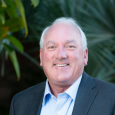Could you explain what Gamida Cell does for those unfamiliar with your operations?
Gamida Cell specializes in transforming cells into powerful therapeutics with the potential to cure cancers. We achieved our first FDA approval in April 2023 for our therapy, Omisirge. This therapy, along with our natural killer cell pipeline, utilizes our proprietary nicotinamide (NAM) technology to enhance and expand cells. Our focus is on allogeneic cell therapies, using cells from donors rather than the patient's own cells, to treat blood cancers and other hematologic malignancies.
What exactly is cell therapy, and how does it work?
Cell therapy involves using cells as treatment, which can originate from the patient (autologous) or a donor (allogeneic). Gamida Cell focuses on allogeneic cell therapies, like our product Omisirge. We use cord blood units, enhance and expand them with our NAM technology, and then use them as a donor source for patients needing an allogeneic stem cell transplant. This is particularly important for patients with acute leukemia, myelodysplastic syndromes, or aggressive lymphoma, who often relapse after chemotherapy unless they undergo a transplant.
How revolutionary are cell therapies in the fight against cancer?
Cell therapies are critical in the treatment arsenal for cancer. They represent a major advancement, especially for patients requiring allogeneic stem cell transplants. Our product Omisirge, for instance, provides a new donor source that can address the unmet needs of many patients. The disparity in donor availability, particularly for non-Caucasian patients in the U.S., is a significant challenge that Omisirge can help mitigate by offering a less stringent matching criteria, potentially increasing access for diverse patient populations. In addition, based on our clinical data, Omisirge can address some of the challenges and limitations with other existing donor sources.
What impact do you anticipate Omisirge will have in the market and on patient access?
Omisirge, with its encouraging phase three study results, has the potential to increase access to transplants and address limitations of current donor sources. Our data suggest Omisirge could reach approximately 1,000 patients at peak market share by 2028. The therapy's less stringent matching criteria are particularly important in addressing health disparities, potentially benefiting patients who historically struggle to find a match in the public donor database.
Can you discuss the disparities in access to therapies and how Omisirge may help?
Access to therapies like allogeneic stem cell transplants is unequal, especially in the U.S., with significant health disparities based on race and ethnicity. Many patients rely on the public database for donor matches, which lacks diversity. Omisirge, with its less stringent matching criteria, offers an opportunity to bridge this gap. Our phase three study had 40% of the participants who were racially and ethnically diverse which is a much higher percentage compared to most hematology oncology studies, underscoring both the unmet need and Omisirge's potential to address it.
What are the main challenges in the evolution of cell therapies?
The evolution of cell therapies faces three main challenges: regulatory approval, market access, and prescriber education. Gaining FDA approval for these complex therapies is the first hurdle. Next, educating payers about the value proposition of cell therapies is crucial, especially since many are one-time treatments with curative intent. Finally, it's vital to educate healthcare providers about new treatments like Omisirge. Gamida Cell has made significant strides in addressing these challenges, ensuring broad coverage and focused prescriber education.
How do you source the right talent for complex cell therapy operations?
Sourcing talent for cell therapy requires a blend of technical expertise, strategic decision-making ability, and a passion for patient care. Technical expertise across R&D, regulatory, manufacturing, operations, clinical fields, and commercial is fundamental. However, given the novelty of cell therapies, individuals must also be comfortable making strategic decisions with incomplete information. Lastly, a deep commitment to patient care is essential, as we often deal with therapies intended to be curative. During COVID-19, the ability to lead effectively in a virtual environment further highlighted the importance of having the right leaders in place.
What is the main virtue a company should possess in the new sphere of cell therapy?
In the innovative realm of cell therapy, a company must possess a blend of technical and scientific acumen, innovative thinking, and a deep understanding of the patient perspective. At Gamida Cell, our team's ability to navigate the R&D process innovatively and translate that into effective clinical development, manufacturing, and commercialization sets us apart. The team, comprising individuals with decades of experience in hematology and oncology, brings a patient-centric approach to developing and educating about our therapies, ensuring they are tailored to meet patient needs effectively.
What is the future outlook for Gamida Cell, and what are your main objectives for the next 5 to 10 years?
Looking ahead, we aim to broaden Omisirge's reach, addressing the growing need for effective donor sources in stem cell transplants.
Financially, we project Omisirge to generate about $300 million in revenue by 2028, potentially growing to $500-$700 million annually.
Our goal transcends financial targets; we are committed to reaching more patients, including those who previously lacked appropriate donor sources. Additionally, our pipeline candidate, GDA-201 (a natural killer cell therapy), is in phase one study, with data expected in 2024. Our mission is to continue developing powerful therapeutics based on our proprietary NAM technology and ensure patients have access to these life-altering treatments.





